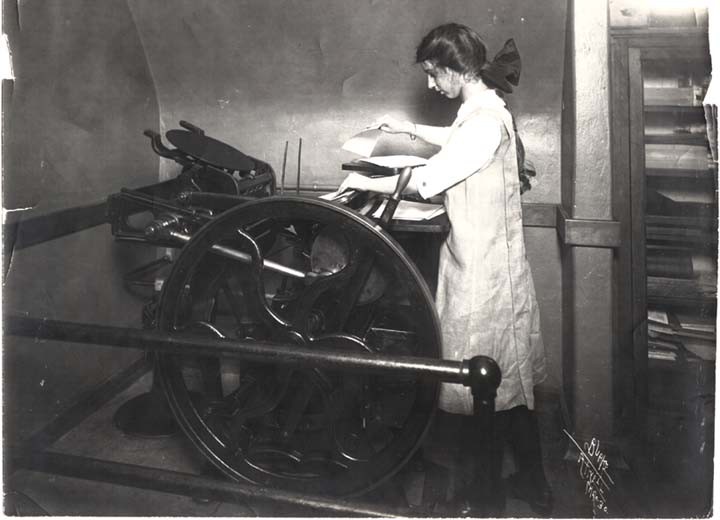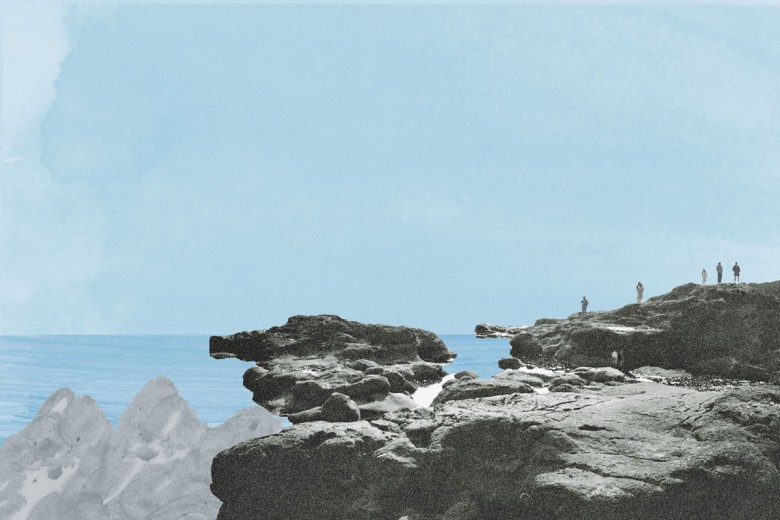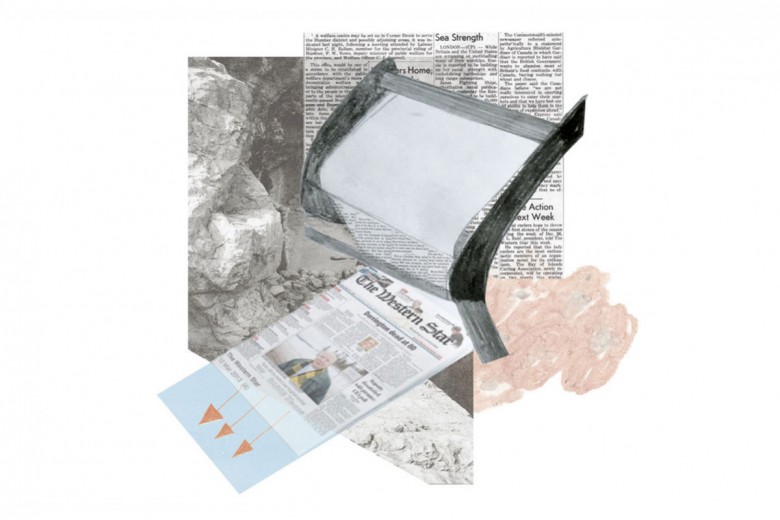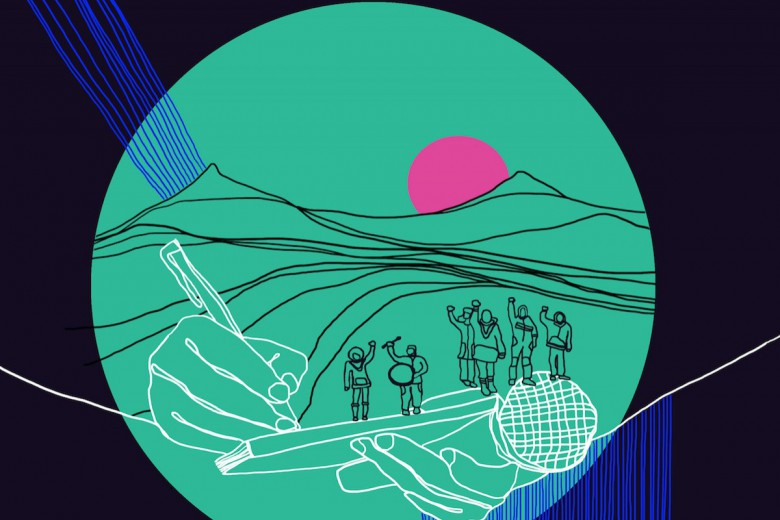
An eighth grade girl uses a printing press in 1910. Photo: University of Chicago Lab Schools archive.
I thank my English teachers who assigned Orwell, Bradbury, Huxley, and Vonnegut. They prepared me to recognize the quiet stealth of a totalitarian future slipping in under bureaucratic names like Government Operations Centre – the actual title of the Canadian federal agency tasked with watching over protests and taco fundraisers. Even right-wing columnists like Andrew Coyne are getting spooked by all the surveillance and the tightening muzzle on privacy commissioners, electoral officers, public scientists, and academics.
Checks on power have fallen to us as individuals railing away on Facebook and Twitter. But remember, social media carries dissenting remarks on a corporate-owned tide of advertising and state surveillance, mixed with the soma of a thousand and one memes counselling us to remain calm and happy. The messages are individualized and fleeting.
Who holds power to serious account? The truth of the Government Operations Centre was dug out by an enterprising Ottawa Citizen journalist, David Pugliese. Good journalism exists, but it needs a leg to stand on. This June, 320 investigative journalists from around the world headed to Winnipeg for a gathering called Holding Power to Account.
To sum up three days of talk: the journalists are worried.
“In the United States, we are poised on the edge of plutocracy,” warned Carl Bernstein formerly of the Washington Post. Compared to his time uncovering Watergate, he says that “today we have a culture – not just a corrupt president – but a culture of disingenuousness among the powerful.” Ah, for the simpler days of a hotel break and enter! Worse, the culture has been internalized. “What you (journalists) do, what you believe in, is being threatened … by our own organizations,” said the CBC’s Peter Mansbridge. “It’s death by a thousand cuts, and we’re bleeding.”
It takes time and organizational backup to file information requests, visit communities, hear people’s stories, untangle chronologies, and then write truth to power. It’s difficult, stick-your-neck-out work. Not something to be taken for granted.
What you are about to read next is written over the objections of Briarpatch’s editors, who worry it appears self-serving. As a media scholar, I say balderdash. With disembodied shareholders sucking commercial newsrooms dry and the CBC bleeding, reader-supported publications like Briarpatch are increasingly left to carry the journalistic mission alone. It’s too important not to talk about. Who else has launched a lawsuit lately to gain information on a uranium deal in a northern village?
There’s a saying: the nail that sticks up gets pounded down. Briarpatch has been pounded down many times in the past 41 years and has always managed to stick right back up. Non-profit media has inborn flexibility and a level of sustainability nestled in the hands of community supporters, beyond market dictates. Briarpatch is rich in that regard, historically able to weather drastic revenue changes that would kill a corporate-owned outlet. But the road grows tougher.
Look at the Canada periodical fund, established to keep small independents like Briarpatch afloat after the General Agreement on Tariffs and Trade knocked down Canada’s 150-year-old postal subsidy and opened the door to increased U.S. competition. In 2002, $26.9 million was dispensed for magazine project funding. By 2013 it was a stingy $963,121 eked out under increased ministerial control. Not surprisingly, Briarpatch, at one time receiving about a third of its budget from the program, was no longer on the recipient list. Picking through government memos, I find it heartbreaking to follow Briarpatch’s hopeful inquiries about grants they’d been assured were recommended for approval in 2009 and 2011. The back and forth among departmental staff (“We’re not sure how to proceed and what we can say to the client”) ends with five fatal words from the desk of then heritage minister James Moore: “I do not approve this grant.”
Arts organizations, development agencies, book publishers, and women’s groups are on the same ropes. Their ads used to regularly occupy the pages of Briarpatch. Now, not so much. It’s a perfect storm for sinking independent media when we most need it.
In the U.S., private foundations have become growing players in independent media. Canada doesn’t share this philanthropic tradition, nor is it the best road to go down. We have a few alternatives though. Quebec’s co-operative movement has long supported community broadcasting. There’s the Ontario Media Development Corporation. In B.C., the labour-affiliated Working Enterprises fund boosts The Tyee’s investigative work. Other provinces, including Briarpatch’s home base of Saskatchewan, are hit-and-miss.
Last November, delegates from the Saskatchewan Federation of Labour voted to sponsor Briarpatch subscriptions for Saskatchewan libraries, then passed a hat for the magazine. People spoke about the need to collectively sustain independent media in difficult times. How can we build on such initiatives? It’s time for a serious conversation about supporting public interest journalism in strategic, enduring ways if we want to take back the future from Big Brother.






